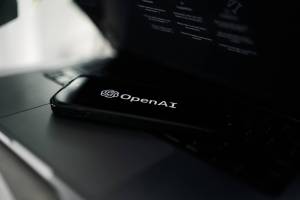OpenAI, the organization behind the groundbreaking ChatGPT, has taken another significant stride in the realm of artificial intelligence. This time, they’ve ventured into the visual domain with the introduction of GPT-4V, a model designed to understand and generate visual content.
However, as with any technological advancement, it comes with its set of challenges. A recent article by Simon Willison highlights one such concern: prompt-injection attacks.
OpenAI’s GPT-4V: Bridging text and imagery
GPT-4V — aka GPT-4V(ision) — is a multi-modal model, which means it’s trained to process both textual and visual data. According to the system card released by OpenAI, this model can generate images from textual descriptions, answer questions about images, and even complete visual tasks that traditional GPT models couldn’t handle.
For instance, if provided with a textual prompt like “a serene beach at sunset,” GPT-4V has the capability to generate a corresponding image. This fusion of text and imagery processing could revolutionize various sectors, from content creation to advanced research.
GPT-4V’s prompt injection
Prompt-injection attacks happen when malicious actors alter AI model prompts. This leads to harmful or misleading outputs. GPT-4V works with text and visuals, increasing attack risks. Attackers can exploit this dual-input system. They craft prompts making the model produce malicious outputs.
Willison’s article notes OpenAI’s system card mentions these attacks for GPT-4V. However, it doesn’t explore the potential consequences deeply. Manipulating text and image inputs can result in deceptive outputs. This includes fake news and misleading images.
Implications and potential applications
The emergence of prompt-injection attacks underscores the importance of robust security measures in AI development. As AI models become more sophisticated and integrated into various sectors, ensuring their resistance to such attacks is crucial. Developers and researchers must be vigilant and proactive in identifying potential vulnerabilities and devising strategies to counteract them.
OpenAI, for its part, has always been at the forefront of addressing and mitigating risks associated with its models. However, as Willison suggests, a more in-depth exploration of prompt-injection attacks and their implications is necessary.
With GPT-4V(ision), OpenAI continues its tradition of pushing the boundaries of what’s possible in AI. As the lines between textual and visual content blur, tools like GPT-4V stand poised to redefine how we interact with, understand, and create digital content. The future of AI-driven content, it seems, is not just textual but vividly visual.
The post Prompt-injection attacks: A new challenge for OpenAI’s GPT-4V appeared first on ReadWrite.

